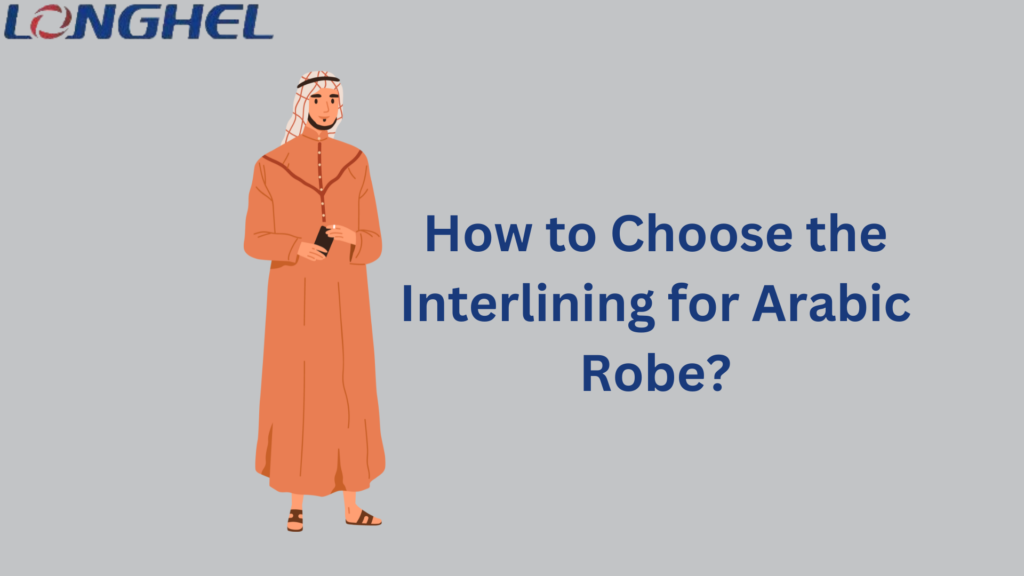Introduction
It is important to choose the right interlining for an Arabic robe. Interlining gives the robe structure and support, helping it keep its shape. It also adds comfort and makes the robe last longer.
Knowing about interlining matters for those buying or making robes. There are different kinds, like fusible and non-fusible, and each one affects how the robe looks and feels. Your choice of interlining depends on the robe’s fabric, the weather, and the purpose.
Robes for hot climates need light, breathable interlining. Formal robes may need stiffer interlining for a sharper look.
Thinking about the fabric, comfort, and when the robe will be worn can help you choose the right interlining. This guide will help you find the best option, so your robe is comfortable, stylish, and durable.
What Is Interlining and Why Does It Matter for Arabic Robes?
Interlining is a fabric layer placed between the outer material and the lining of a garment. It gives the clothing structure and support. In Arabic robes, interlining helps the robe hold its shape, adds comfort, and increases durability.
Types of Interlining
There are two common types of interlining: fusible and non-fusible.
- Fusible Interlining: This type has an adhesive on one side. When heated, it sticks to the fabric. Fusible interlining is easy to apply and works well for formal, stiffer robes.
- Non-Fusible Interlining: Non-fusible interlining doesn’t use adhesive. It’s softer and ideal for lighter or delicate fabrics. This makes it a good choice for everyday Arabic robes.
Why Interlining Matters for Arabic Robes
The right interlining affects how a robe fits, looks, and feels. It gives the robe the support to prevent sagging and keep its shape. A well-chosen interlining also improves the robe’s durability and comfort.
How to Choose the Right Interlining
When selecting interlining for an Arabic robe, consider the fabric, climate, and occasion. In hot climates, breathable interlining works best. For formal events, stiffer interlining gives the robe a sharp, structured appearance.
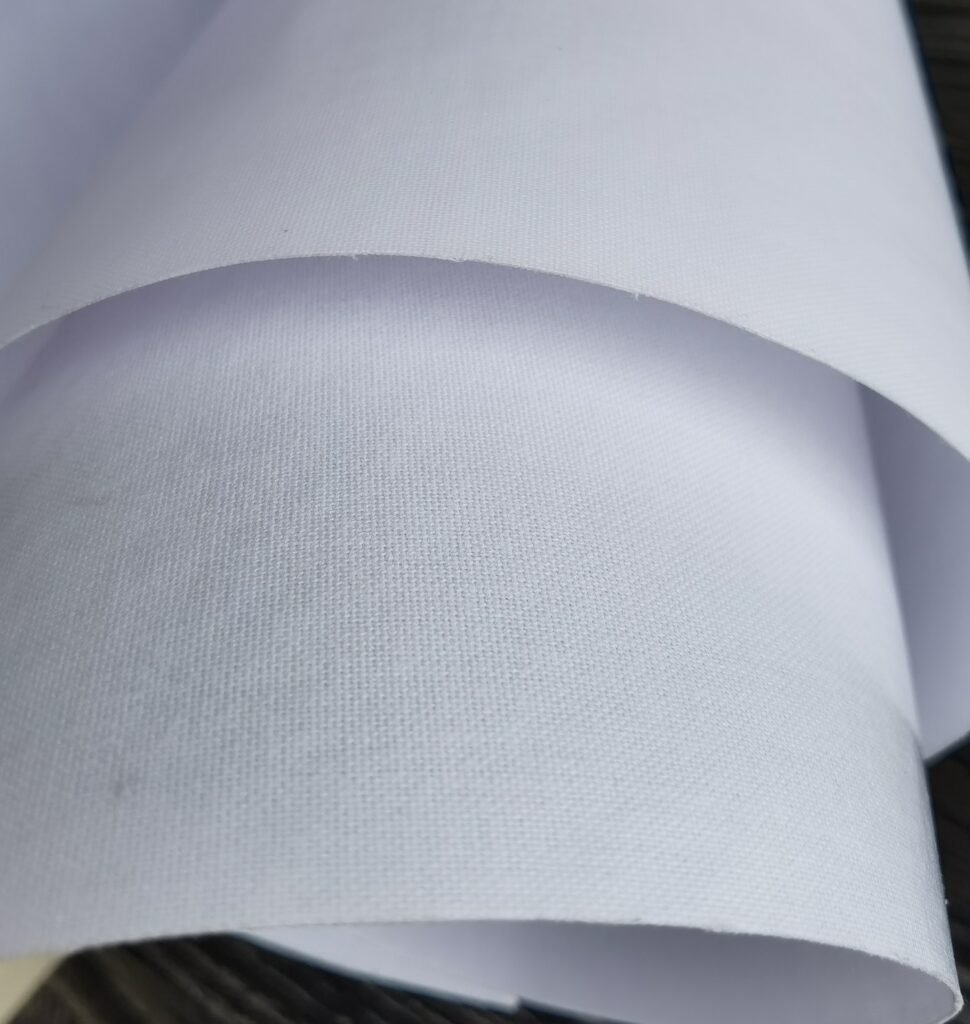
What Factors Should You Consider When Choosing Interlining for an Arabic Robe?
When choosing interlining for an Arabic robe, there are several key factors to remember. The right interlining improves the robe’s fit, comfort, and durability. Here’s what to consider:
Fabric Type
The type of fabric used in the robe plays a big role in interlining selection. Lightweight fabrics like cotton or linen need a soft, flexible interlining. Thicker fabrics like wool or polyester may need stiffer interlining to structure the robe.
Climate and Season
The climate where the robe will be worn is important. Choose a breathable, lightweight interlining for hot climates that allows air to flow. For cooler seasons or formal robes, a thicker interlining adds warmth and structure.
Purpose and Occasion
Think about when and where the robe will be worn. A casual, everyday robe might benefit from a softer interlining for comfort. A formal robe worn at special events may need a stiffer interlining for a more polished look.
Comfort
Comfort is key for everyday robes. Look for an interlining that feels soft against the skin. Avoid stiff interlining for robes worn daily.
Budget
Different interlining materials vary in price. Choose an option that fits both your needs and budget.
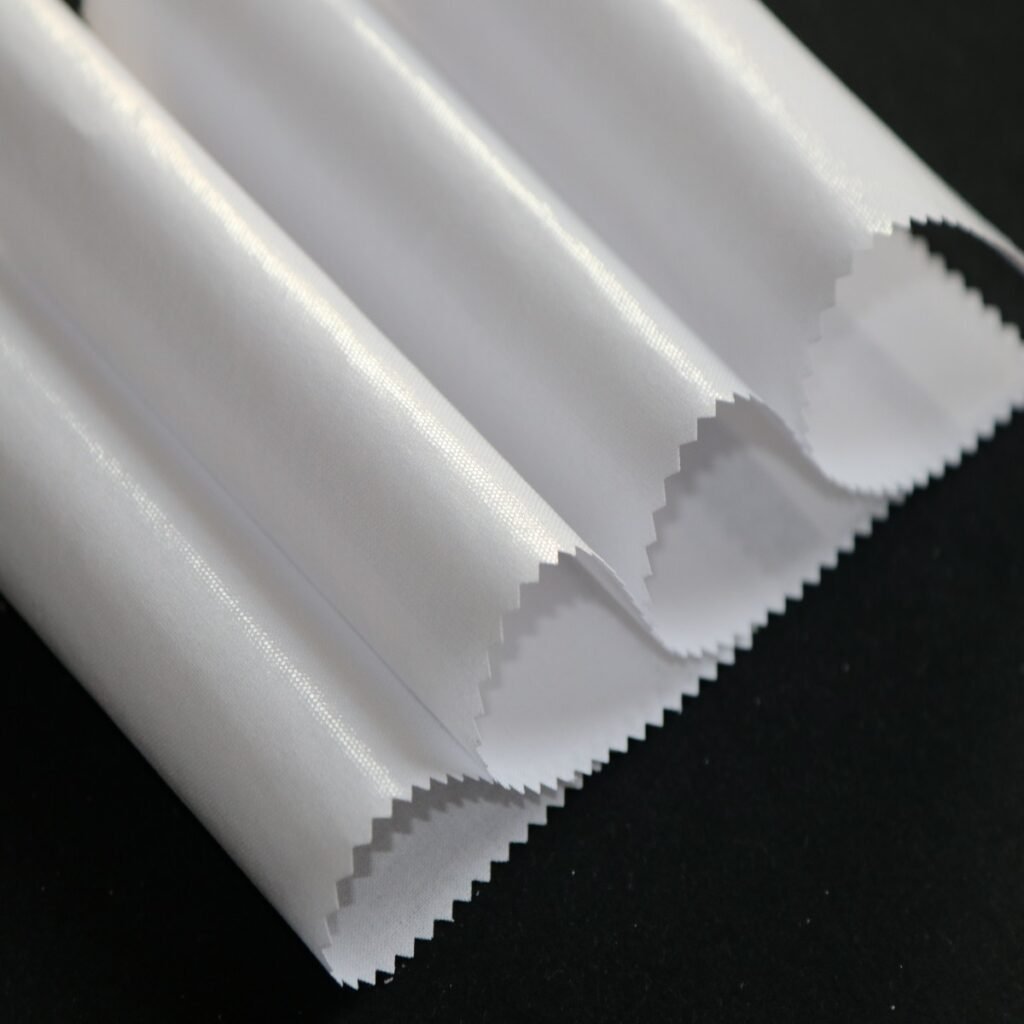
What Are the Different Types of Interlining Materials for Arabic Robes?
Interlining materials come in various types, each offering unique benefits. Choosing the right type depends on the fabric, style, and use of the Arabic robe. Here are the most common interlining materials:
Fusible Interlining
Fusible interlining has adhesive on one side. When heat is applied, it bonds to the fabric. This type is easy to use and gives structure to the robe. It works well for formal or stiff robes. However, it may not be suitable for delicate fabrics like silk.
Non-Fusible Interlining
Non-fusible interlining doesn’t have adhesive. It is sewn between the outer fabric and the lining. This type offers more softness and flexibility. It is ideal for lighter fabrics or casual robes. It allows more natural movement and is often used in everyday wear.
Natural Fiber Interlining
Natural fibers like cotton or wool are breathable and comfortable. These materials work well in warmer climates because they allow air to flow through the robe. Cotton interlining is soft, while wool adds more thickness and structure.
Synthetic Fiber Interlining
Synthetic interlining, such as polyester or viscose, is durable and affordable. These materials offer firmness and structure but may not be as breathable as natural fibers.
How Does Interlining Enhance the Appearance of Arabic Robes?
Interlining plays a key role in improving the appearance of Arabic robes. It gives the robe structure and helps it maintain a sharp, clean look. Without proper interlining, robes can lose shape and appear wrinkled or saggy.
Adds Structure
The interlining gives the robe a firm base, allowing it to hold its shape. This is especially important for formal robes, where a crisp, polished look is desired. The right interlining ensures the robe drapes smoothly over the body.
Supports Fabric
Different fabrics need different levels of support. Thicker fabrics may need stiffer interlining to stay structured, while lightweight fabrics need softer interlining to maintain flexibility. By choosing the right interlining, the fabric maintains its best appearance without looking stiff or overly soft.
Improves Fit
Interlining enhances the robe’s fit, making it look more tailored. It helps the fabric lie flat and smooth against the body, avoiding bunching or unevenness.
Adds Comfort
Comfort also affects how a robe looks. Interlining that feels soft makes the wearer more comfortable, helping the robe move naturally and look more graceful.
What Interlining Works Best for Common Arabic Robe Styles?
Different Arabic robe styles require different types of interlining. The right choice enhances the robe’s look, comfort, and durability. Here’s what works best for popular robe styles:
Traditional Robes (Thobe/Kandura)
Traditional robes often require firm interlining to maintain their structured appearance. Fusible interlining is a good option for these robes. It helps the robe stay crisp and ensures it looks formal. For lightweight fabrics, a thinner fusible interlining will provide enough structure without making the robe too stiff.
Modern and Casual Robes
Modern robes have a more relaxed style. They need softer interlining to allow more natural movement. Non-fusible interlining works best here. It provides a light structure while keeping the robe flexible and comfortable. This type of interlining is perfect for daily wear robes made of cotton or linen.
Luxury and Special Occasion Robes
For luxury robes made of delicate fabrics like silk or satin, choose soft, non-fusible interlining. This allows the robe to drape elegantly while maintaining its shape. Avoid heavy interlining that can make these robes look too stiff or bulky.
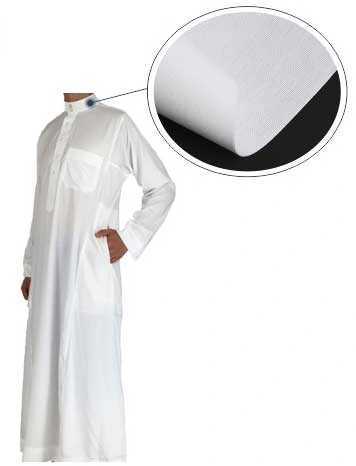
What Are Some Practical Tips for Selecting the Right Interlining?
Choosing the right interlining for an Arabic robe can be easy if you follow a few practical tips. The correct interlining will make your robe look better, feel more comfortable, and last longer.
Consider the Fabric
Always match the interlining with the fabric type. Lightweight fabrics like cotton or silk need soft, flexible interlining. Thicker fabrics like wool or polyester require firmer interlining to maintain their shape.
Think About the Climate
Choose interlining that fits the climate where the robe will be worn. For hot weather, pick a breathable and lightweight interlining. For cooler seasons, use a thicker interlining to provide warmth.
Test the Interlining
Always test the interlining with the fabric before making the final decision. This helps you see how the fabric reacts and whether the interlining improves the robe’s fit and appearance.
Consult a Tailor
If you’re unsure, ask a tailor for advice. They have experience working with different fabrics and interlining materials and can help you make the best choice.
Pre-shrink the Interlining
For robes that will be washed, make sure the interlining is pre-shrunk. This prevents any unwanted shrinkage after the robe is made.
What Common Mistakes Should You Avoid When Choosing Interlining?
Choosing the wrong interlining can ruin the fit and look of an Arabic robe. Here are some common mistakes to avoid:
Using Heavy Interlining on Light Fabrics
One common mistake is choosing a heavy interlining for lightweight fabrics like cotton or linen. This can make the robe stiff and uncomfortable. Use light and flexible interlining for softer fabrics to keep the robe comfortable and breathable.
Ignoring Climate and Season
Another mistake is not considering the climate. Thick interlining in hot weather can make the robe too warm and uncomfortable. Always pick breathable interlining for warm climates and thicker interlining for colder seasons.
Choosing the Wrong Type of Interlining
Each fabric requires a specific interlining. Fusible interlining works well with formal robes, while non-fusible is better for casual wear. Picking the wrong type can affect the robe’s drape and overall appearance.
Skipping a Test
Some people skip testing the interlining with the fabric. This can lead to poor results, like an ill-fitting robe. Always test first to see how the fabric and interlining work together.
Not Pre-shrinking Interlining
For washable robes, always pre-shrink the interlining. This prevents shrinkage after washing, which could affect the robe’s fit.
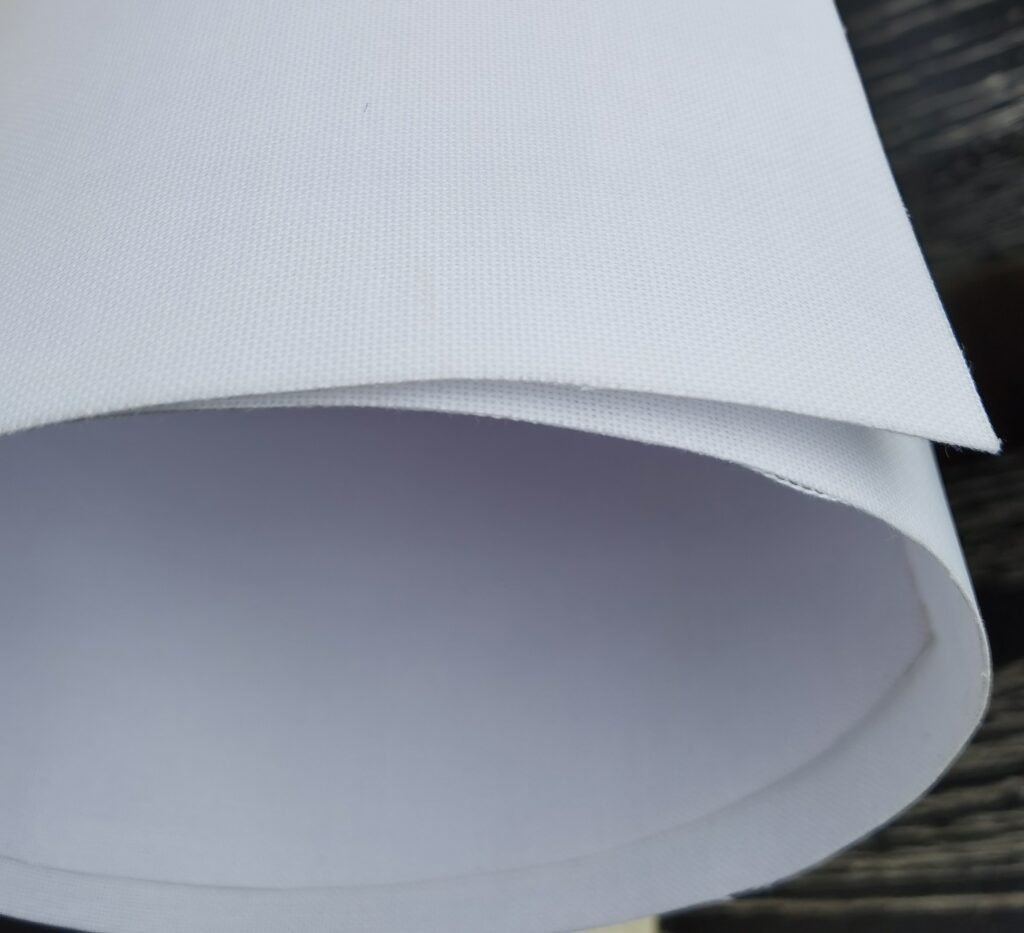
Conclusion
Choosing the right interlining for an Arabic robe is essential for achieving the best fit, comfort, and appearance. Consider the robe’s fabric type, climate, and purpose when making your choice. Use light, breathable interlining for everyday wear and firmer interlining for formal occasions.
Always test the interlining with your chosen fabric to ensure they work well together. Avoid common mistakes, such as using heavy interlining on lightweight fabrics or not pre-shrinking interlining.
You can enhance the robe’s overall quality and style by paying attention to these details. The right interlining will make your Arabic robe look polished and comfortable, ensuring you enjoy wearing it for any occasion. Take your time and make informed choices for the best results.
FAQs
What Material Should I Use for Interlining?
Choose cotton for breathability, polyester for durability, or wool for warmth and structure.
What Are the Different Types of Interlining Fabric?
Common interlining fabrics include cotton, polyester, wool, silk, and blends of natural and synthetic fibers.
What Is the Interlining Method?
The interlining method involves placing fabric between the outer and lining layers for added structure.
Contact Us to purchase the best interlining for your products
